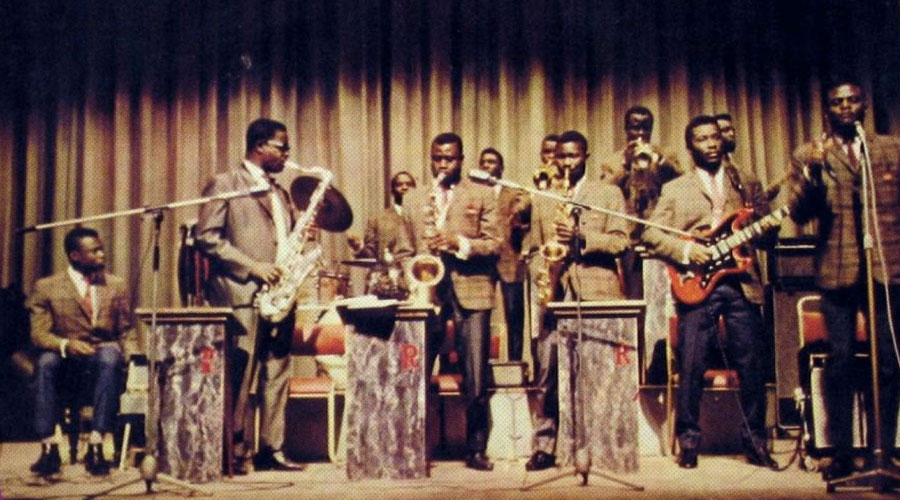Highlife – Ghana’s urban dance music – has had enormous influence throughout West Africa, but its roots are firmly embedded in the clubs and dance halls of the colonial Gold Coast. Here, in the early years of Ghana’s independence in the late 1950s, it effectively became the national music, and over the last half-century has proved to be one of the most popular, enduring and adaptable African styles.
The highlife story begins in the early years of the twentieth century, when various African and European influences – including church music, military brass-band music and sea shanties – were combined with the Gold Coast’s own local rhythms and idioms. These included osibisaba, a Fante rhythm from southwest Ghana; various types of guitar music from Liberia; and asiko and gombe from Sierra Leone, though the latter originated among freed Maroon slaves from Jamaica in the early nineteenth century.
Instrumentation depended on what equipment was available, and out of a welter of neotraditional variations there gradually emerged a form known generically as highlife.
The term was coined in the 1920s and referred to the high-class, top-hat-and-tails dance evenings that had become fashionable among the Ghanaian elite, with music provided by ballroom and ragtime bands such as Excelsior Orchestra, Jazz Kings, the Accra Orchestra and Cape Coast Sugar Babies. However, two other proto-highlife forms had already appeared in Ghana’s coastal towns and ports. A local brass-band music had evolved in Cape Coast and El Mina after 1870, when several thousand West Indian colonial soldiers were stationed in Ghana. The Afro-Caribbean music they played in their spare time resonated with Ghanaians, who went on to create their own local adaha music.
This spread into southern Ghana, and during the 1930s, those Akan towns and villages who couldn’t afford expensive brass instruments created konkoma (or konkomba) marching bands that used local drums and voices instead. A fourth form of early highlife known as palm wine – named after the drink made from fermented palm-tree sap – evolved from the Fanti osibisaba and cross-fingering guitar techniques introduced by visiting Liberian Kru sailors.
The most famous of the Fanti guitarists were George William Aingo and Kwame Asare (see box opposite). In the 1950s, guitar bands began to go electric, and pioneered by E.K. Nyame, they became linked to a popular theatre known as the concert party.
Header image: This is Africa







